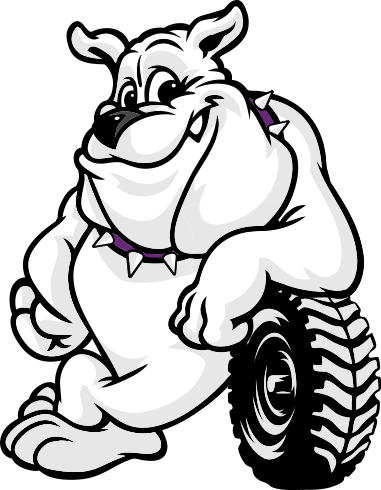Shopping for Used Tires Means Knowing How to Read Their Specs
Tires come in many different sizes and it’s very important to get the right tires for your vehicle. Looking through a forest of used tires for sale at our Milwaukee area junkyard can seem a bit daunting. Fortunately, tires have markings on their sidewalls indicating their specs, but they can be a bit complicated to read. Once you learn what the letters and numbers mean, reading the markings so you can buy used tires is not too difficult since most tires in the US follow a standard pattern.
To find out your tire size, first, locate the tire specs on your sidewall.
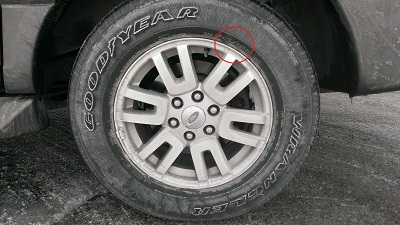
Tire sizes and specs in America generally have a letter followed by three numbers, a slash, two numbers, another letter and, finally, two more numbers.
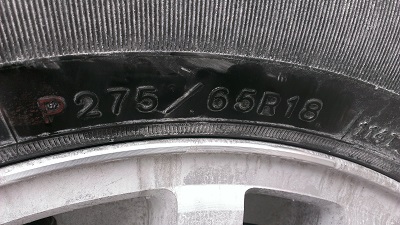
Once you’ve found your tire’s specs, it’s time to read them so you know what you’re looking for. This tire is rated P275/65R18.
The first letter is the service type of the tire.
This single letter states what type of vehicle the tire should be used on. There are four options.
LT: Light Truck |
Tire specs beginning with LT are designed for use on large SUVs, vans and medium to heavy-duty pickups. |
P: Passenger |
These tires are for most cars, minivans, SUVs and pickup trucks up to ½ ton load capacity. |
ST: Special Trailer |
ST tires are only for use on trailers hauling things like cars, boats or multi-purpose trailers. |
T: Temporary |
Small spare tires generally are T type, indicating they should only be used for a brief period of time until a full-sized replacement tire can be acquired. |
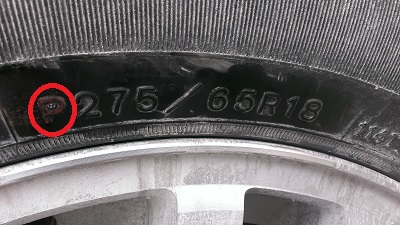
Our example tire, then, is rated for use in Passenger vehicles.
The number coming after the first letter tells you the tire’s section width.
Section width is a measurement, in millimeters, from sidewall to sidewall when properly mounted and inflated.
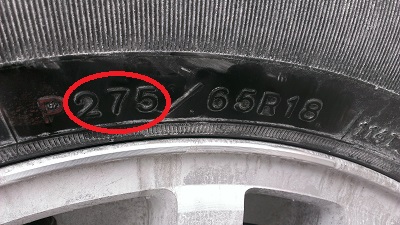
Our example tire has a 275mm section width.
After the slash come two numbers stating the aspect ratio of the tire.
This is the hardest part of the tire specs to understand because it is the tire’s sidewall height from rim to tread expressed as a percent of the section width.
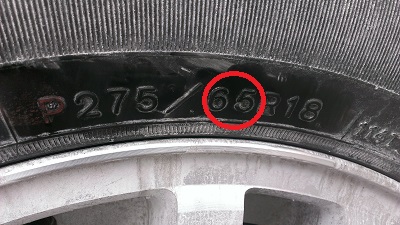
Our example tire has a 275mm section width and a 65 aspect ratio. This means the distance from rim to tread on the sidewall should be 65% of 275mm, or 178.75mm.
The second letter in a tire’s markings corresponds to its internal construction.
There are three possible letters.
B: Belted |
Belted tires have diagonal body plies and belts reinforcing the tire. These are very uncommon. |
D: Diagonal |
Tires with diagonal reinforcing have body plies crisscrossing each other. In general, you’ll only find this on light trucks and temporary tires. |
R: Radial |
Almost all tires are radial in construction. These tires have body plies radiating out of the center of the tire. |
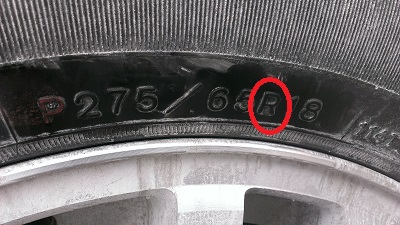
Like most other tires, our example is of radial construction.
The number immediately following the internal construction letter is the rim diameter.
This number is given in inches and your replacement tires must have the same rim diameter as the original tires.
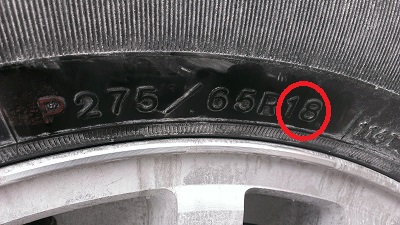
The tire we’re replacing has an 18” rim diameter.
What Tire Markings Mean in Plain English
Read properly, our P275/65R18 tire is telling us it is for use on passenger vehicles, is 275mm wide, the sidewall height is 65% of the section width, it’s a radial tire and must go on 18” rims.
How Old Are Those Tires? Reading the DOT Code
One final, important piece of information included on your tires is the DOT code.
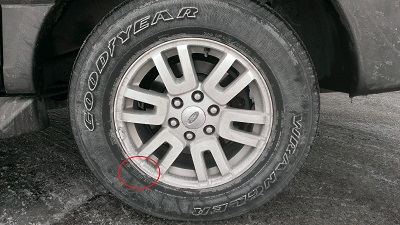
The Department of Transportation requires all tires manufactured for American use to include certain information. The first part of the DOT code is relatively unimportant for tire buyers since it simply indicates where the tire was made. The second half, however, is a four-digit number stating when the tire was produced. The first two digits stand for the week number and the final two are the year of the tire’s manufacture.
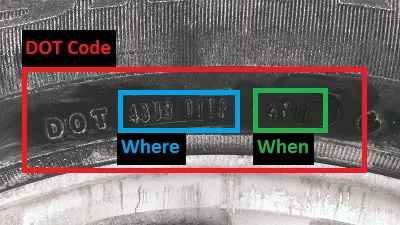
Our example tire has a DOT code reading 4BU9 011R 4811. 4811 means the tire was made in the 48th week of 2011, which corresponds to the week of 11/28/11 to 12/4/11. Using tires more than ten years old is extremely dangerous as the tire may fail without warning. When buying used tires, always check the DOT code and steer clear of older tires.
Knowing how to read your tire’s markings, you can now find a suitable replacement. Give us a call or stop on by and we’ll help you find the right tires for your vehicle for far less than new tires. While you're over, you can check out our selection of used rims for sale to go with your tires or pick up any used auto parts you might need.

